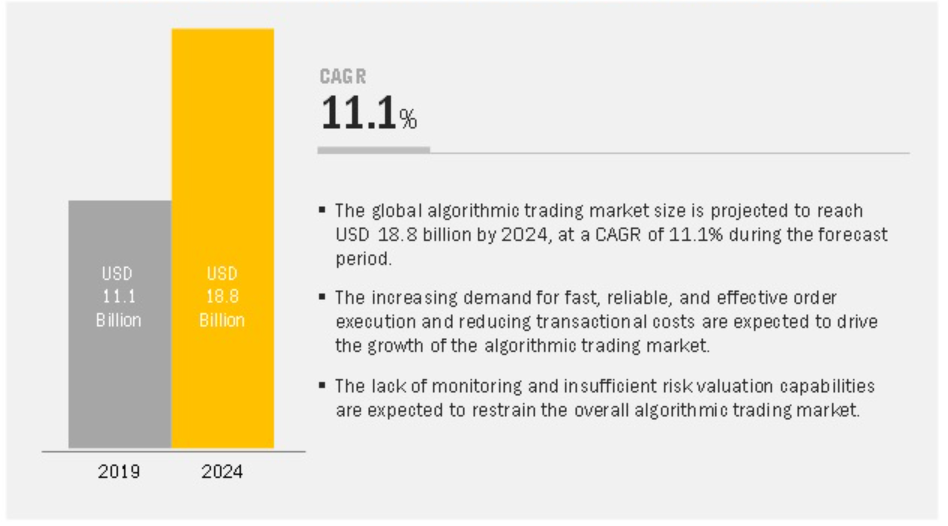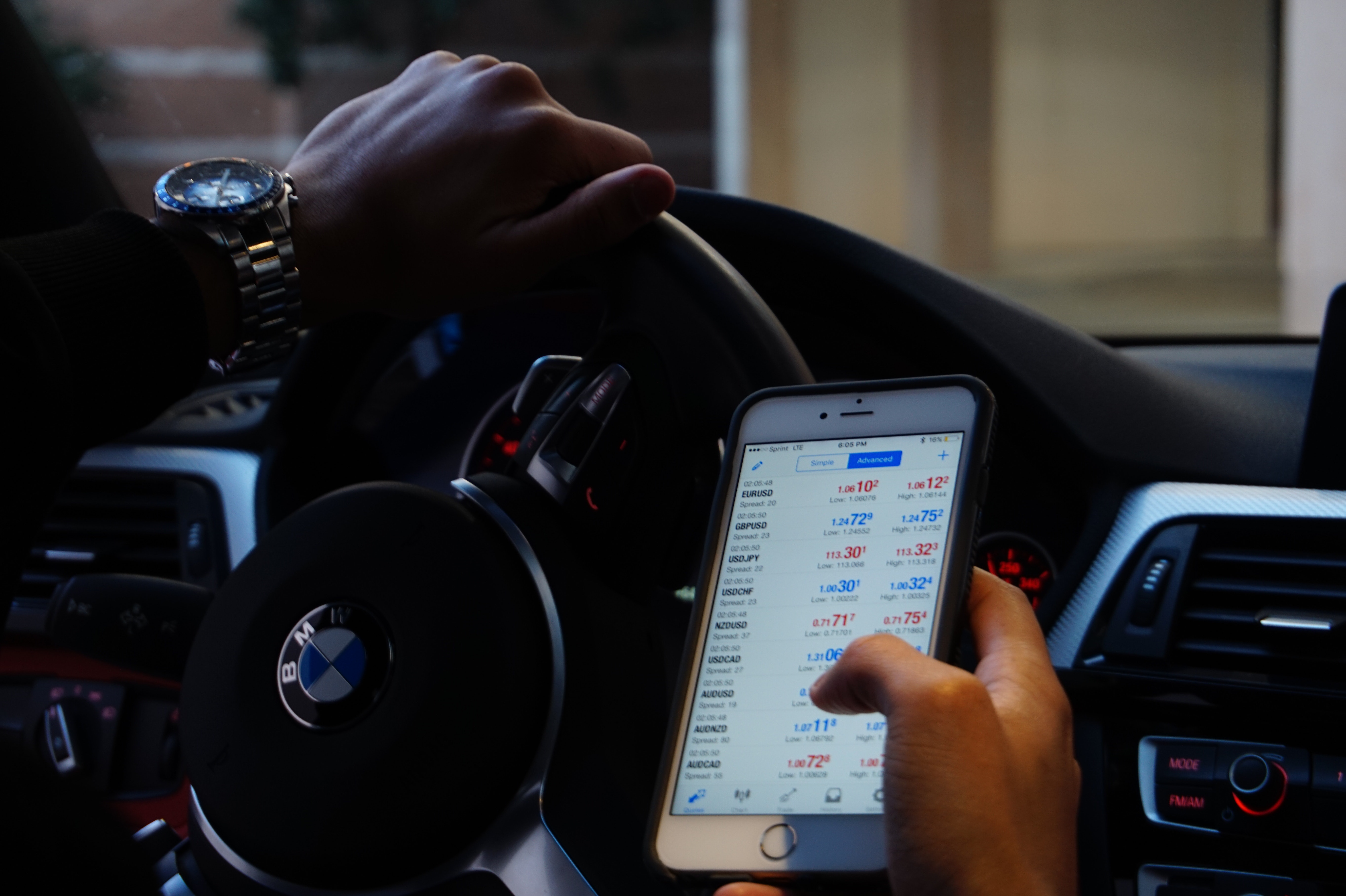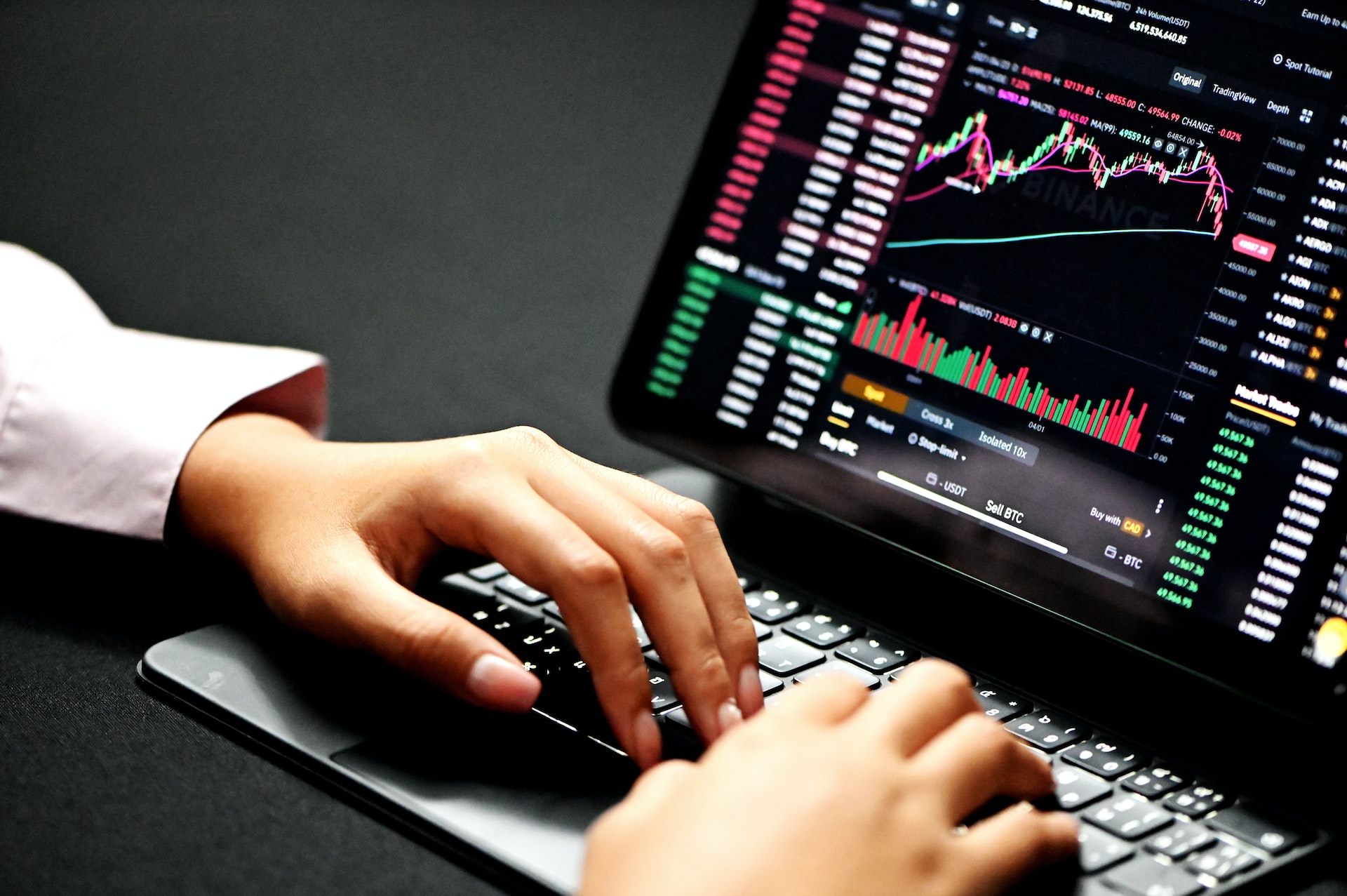Automated Forex Trading Software Development Guide
Anyone who has ever dealt with Forex knows how exhausting the trading process can be, especially if mistakes and failures happen frequently. They quickly disappoint users.
That is why the concept of software for automated trading appeared. With this, you can provide your clients with all the necessary trading tools and with a reliable, emotionless assistant in closing deals.
Such intelligent solutions can be optimized for the specific requirements and needs of the user. However, there are other reasons to develop your own automated custom trading app.
So, in this article, let's discuss the features of such software, its capabilities and advantages. We will also touch the topic of custom trading platform development, the main steps and methods of implementing trading strategies.
What is Automated Forex Trading Software?
The primary purpose of automated Forex trading solutions (mechanical trading systems) is to provide functionality for effective trading in various markets, including the markets of cryptocurrencies, shares, commodities, etc.
These corporate platforms are also called algorithmic software, as they analyze trading conditions, market features and trends, and automatically make profitable trading decisions based on the received data: it can be both the results of economic news analysis and technical analysis.
Simply put, this stock market enterprise software is an autonomous system for launching a trading terminal, activating custom programs (algorithms) and trading without user involvement. It allows you to set specific rules for trading entry and exit, as well as money management, which will be performed automatically without a trader.
Some Stats
Nowadays, about 80% of shares traded on US stock exchanges come from algorithmic systems. Moreover, $19 trillion of assets are managed by automated software, and only $7 trillion of them, which is 35% of the total, are operated by humans.
Experts claim the global algorithmic trading market size will reach $18.8 billion by 2024 at a compound annual growth rate (CAGR) of 11.1%.
The reason for this rapid growth is the significant acceleration of the pace of trade and the resulting demand for fast and efficient solutions for order fulfillment. In addition, automated software makes it easy to meet government regulatory requirements and reduce transaction costs.

Source: Marketsandmarkets.com
Main Benefits of Custom Automated Forex Trading Software
Since the automated Forex trading system functions without a trader, it saves users’ time and personal resources. Algorithmic market analysis and searching for the most profitable currency transactions according to pre-set parameters are more efficient and much faster. Manually, this process requires a lot of time and effort, which often leads to the loss of instant trading opportunities.
It is also worth noting that such software successfully directs traders to optimal trading practices and significantly simplifies the decision-making process. Quality products are easily integrated with third-party platforms: ERP systems, accounting applications, etc.
However, these are not the only advantages. Let’s discuss more of them.
Much Better Entry Speed Indicators
In trading shares, currencies, assets – anything, the pace is significant. The speed of entry and exit is one of the main indicators affecting the final result's success. So when choosing a trading app, the users always pay attention to provided entry speed.
Automated software instantly places orders as soon as pre-defined criteria are met, and it immediately reacts to market changes and trading conditions. Therefore, entry and exit from the transaction are many times faster than if it is done manually.
Also, Forex trading automation prevents pasting the stop-loss level before the order is entered. That is how your users can be sure that they act fast and smartly enough to close profitable deals and avoid unprofitable ones.
Accessibility
Automated trading platforms have accessible functionality that even beginners and unskilled users can use without problems. Quality software of this type provides- training opportunities in the form of demo videos, ready-made presets, trading criteria for beginners, etc.;
- all the necessary functionality for correct decision-making, even with minimal field knowledge.
Planning and Discipline
The automated trading mode doesn’t allow the user to deviate from the intended criteria due to emotional or other factors. Everything happens within the framework of a clearly defined strategy. Even in the case of the most volatile trades, the risk of "pilot error" is minimized or even reduced to zero.
Also, such software ensures actions consistency and clear following the plan regardless of the circumstances. Thanks to this, the chances of making a profit are much, much higher.
Minimizing Doubts
Humans have emotions, and in the process of trading, they often make irrational decisions under the influence of doubt. Unlike a live trader, automated software has no feelings, so all processes take place according to a specific plan and without deviations from a rational template.
This makes it much easier to arrange deals and get profit. So users of your software will rely on it in decision-making and will be ready to pay for additional features that will help speed up this process.
Diversification of Trading Risks
With custom trading automated software, your clients can use several different strategies simultaneously. In addition, traders can diversify risks by allocating resources between different instruments or accounts. All this is supported by the wide possibilities of ultra-fast analytics and situation assessment.Backtesting
This is, perhaps, the most crucial advantage of automated trading systems. Backtesting allows users to apply defined rules and strategies to historical market data.
Thus, before risking their resources in real-time trading, traders can test their ideas and solutions for viability, determine the principal risks and expectations of the Forex system, etc. In other words, this opportunity allows them to identify the strengths and weaknesses of a trading strategy, learn how to adjust it, and apply it in the right circumstances.
Control and Updates
Users can easily track indicators such as payables and receivables, transactions, currency exchange rates, currency service support and other data. Information is updated automatically, so traders have up-to-date data at their disposal.

Essential Features of Forex Trading Automated Software
Forex trading automated software is a solution that must provide complete and up-to-date data and a whole instrumentality for making the most informed decisions. Accordingly, it must have a comprehensive functionality for training, in-depth analytics, and successful market operations.
Obviously, the main feature of such platforms is automated trading. What does it mean? The trading automation feature allows users to stay active 24/7 to buy and sell efficiently. This is possible by following defined strategies built on insights about market conditions and fluctuations, historical data, etc.
This is a basic but not the only important feature. Custom software often has functionality adapted to the customer's specific needs and requirements.
Let's discuss some other critical versatile features.
Analysis of Market Conditions
The analysis is crucial for such software. Such features are necessary for making and processing a large amount of information based on which predictions are made and trading strategies are formed. Therefore, built-in tools in combination with third-party API integrations are a must.
What do these features provide?
- data visualization (diagrams, charts, patterns and trendlines, etc.);
- the ability to analyze the market by specific indicators (trend detectors, moving average, etc.);
- financial reporting of trading accounts;
- relevant market insights;
- investment evaluation, etc.
Trading History
This is a simple but significant feature of automated Forex software. It gives access to trading history data to form the right strategy for future investments. Also, this feature is a must for evaluating market opportunities, testing ideas and increasing profitability indicators.Order Placement and Streamlining
The ability to quickly buy or sell greatly simplifies trading activities, and automation of this process makes it more efficient. Therefore, the feature of placing orders and simultaneous and instant transactions is critical.
This element should contain functionality for managing limit orders, sell orders, buy orders, "stop-loss" orders, etc. It is also important to consider tools for customizing order types and their placement.
It also can have related analytical functionality and connect with the analytics features. This includes tracking prices and their updates in real-time, monitoring trading statistics, determining the ratio of win or average loss, etc.
Financial Activity
You will definitely need a feature to deposit and withdraw assets conveniently. All these processes involve personal data (bank accounts, etc.), so it is very important to ensure the security of this process and protection against fraudulent activities. Machine learning algorithms and artificial intelligence are often used for these purposes.Multiple Account Management
As already mentioned, one of the advantages of automated Forex trading software is the ability to trade from several accounts at the same time. This requires some functionality. It is essential to do everything in such a way so that mini-accounts, managed accounts, etc., are located in one place and are accessible to the user.Ledger and Statistics
These are also useful features that help complete systematic trading. The ledger is needed to integrate accounting modules, which significantly simplifies the process of managing assets due to the wide possibilities of verifying records. Statistics, in turn, provide data in an accessible form for evaluating strategies, their adjustment and improvement.Anti-fraud Protection and Secure Access to Accounts
Since Forex trading involves using financial and personal data. To create custom automated trading software, you should consider reliable built-in security features. This includes a robust user identification system, data protection measures, fraudulent activity detection and prevention, etc.
Developers use various technologies for this. It can be a biometric identification system, AI-based tools for analyzing user behavior and identifying suspicious activity, a response and notification system, etc.

Five Steps To Create Automated Trading Software
The decision to build your own trading platform is great if you find experienced developers and understand precisely how you will use it. Of course, each team works according to different patterns. However, in most cases, the development process consists of five main steps.
Step 1. Researching and Planning
The research stage is essential in the development process. First, it allows the team to determine the specific product goals and clarify the client’s business needs, based on which the necessary functionality will be assembled.
Second, this step involves analyzing similar software and competitors to understand what data can be used and how to gain a competitive advantage and predict future system changes.
Also, a data trading plan is created at this stage, which helps with the ways and terms of achieving goals. This is where risk-reward ratios, basic trading strategies, markets, a business plan, etc., are defined.
Step 2. System Design
System design is the next step of automated trading system software development. Here, the development team is engaged in choosing ways and tools to implement the ideas and achieve the goals defined during the first stage.
In other words, the functionality and system behavior strategies in one or another case are represented here. Also, this step involves the selection of trend indicators and analytical system type (technical or fundamental analysis).
Risk Management
Risk management tools are also defined during this stage. These can be:- Basic stop. In this case, the trader's position is closed as soon as it gets as close as possible to the specified price level. With rapid market changes, such a price may be worse than the set parameter, so this moment should be considered when making a tool.
- Trailing stop. Fixation of profit while tracking the positive movement of prices.
- Guaranteed stop. Provided that a small premium is paid, the trader's position is closed at the precisely defined level.
- Limits. It can be a tool to automatically close a deal when the desired price level is reached, a limit at a better price, etc.
Step 3. Development
The automated trading software development stage is about converting ideas and patterns into code. Developers can use different programming languages for different platforms. The necessary integrations with third-party services are also carried out at this stage.Step 4. Testing
Testing allows the team to identify all the shortcomings and improve the software before launching it for trading. This is very important to ensure quality and prevent system errors.
In most cases, testing is performed on static data that cannot consider all the real process parameters. However, professional developers always make it as useful and accurate as possible so that the software works without risk to the user's capital investments.
Step 5. Launching
Launching trading software doesn’t always go smoothly. Very often, the first steps in real conditions become an additional stage in testing, after which developers find and fix bugs that couldn’t be determined using static data.
At this stage, additional "calibration" of the system, its optimization and adjustment occur. Already after that, the software can be safely used for trading.This is the final stage of development, but your collaboration with engineers doesn’t end there. Any software needs constant maintenance and timely updates.

Ardas Experience in Automated Forex Software Development
One of the best examples of our expertise is the CFD platform we developed for FX brokers with full market control. We managed to make a high-speed SaaS tool with extensive real-time trading capabilities.
The customer has approached us with one main task – to create software for trading contracts and options that would be convenient to use, have a gamified interface, and be adaptive for smartphones.
As an experienced automated Forex trading software development company, we’ve decided to add critical features such as high-quality analytics, configurations for different user roles, etc. Let’s discuss the most critical ones.
- Timely updates of data and analytics. We’ve made the necessary integrations and created functionality to regularly update data such as prices and offers.
- Trade mechanism. Using a reactive framework and working on web sockets, we could provide ultra-fast trading mechanisms with transactions as fast as 0.1ms.
- Personal trading configuration. We have developed a system for selecting and configuring asset trading by classes, types, etc. This helped users choose what to trade and control the process.
- Administration interface. This includes functionality to manage registered clients' flow, review their balances and rates, create brokers, customize their service settings, etc. We’ve also created a set of such features as reporting and market analysis, cohort analysis and financial monitoring.
Why Should You Choose Ardas for Automated Trading Software Development?
Ardas has more than 17 years of experience developing custom software for various industries. A large niche in our expertise is precisely occupied by fintech and trading, which require special attention to the architecture and security systems. Our developers use best practices and the latest tech innovations to create products ready for any challenges and changes.
Over the years, we’ve developed a unique systematic approach to software development. It includes a clear division of roles and areas of responsibility, prioritization of tasks to structure and plan the process, transparent communication and regular reporting, quality control and adherence to specifications. We also have extensive experience in risk management and professional analysis, which allows us to anticipate and overcome all challenges.
That is why you should choose us to develop an automated trading solution. We will be able to ensure the professionalism and competency of our team, provide an accurate estimate, and guarantee the high quality of the final result of cooperation.
Summing Up
Automated Forex trading systems are a good solution for those who are working with many different assets and various markets. Such custom platforms help speed up the trading process and avoid elementary mistakes.
In addition, proper software of this type allows traders to pre-test trading strategies and use only optimal ones in specific circumstances and within particular market conditions.
Automation ensures the simultaneous use of various tools and functions for the best result. It speeds up entry, prevents deviations from the strategy and impulsive decisions, and diversifies risks. Modern SaaS tools are accessible, solid and reliable to use.
Each custom product has its own set of features that meet the customer's specific business needs. However, several mandatory features should be present in any automated trading software. These are analytical tools of various types for data visualization, risk assessment, decision making and reporting.
Features of trading history formation, financial activity management, statistics and historical data collection, as well as a reliable system of protection against fraudulent actions and authorized access, are also mandatory.
We at Ardas have extensive experience in developing automated trading platforms and improving their availability and performance. We have enough expertise to create the optimal infrastructure, find perfect architectural solutions and the best way to manage and protect data.
Our engineers have many successful trading projects behind them, so we will be able to find custom solutions for any business needs. We’ll also be pleased to advise you on any questions. Just contact us in a convenient way.
